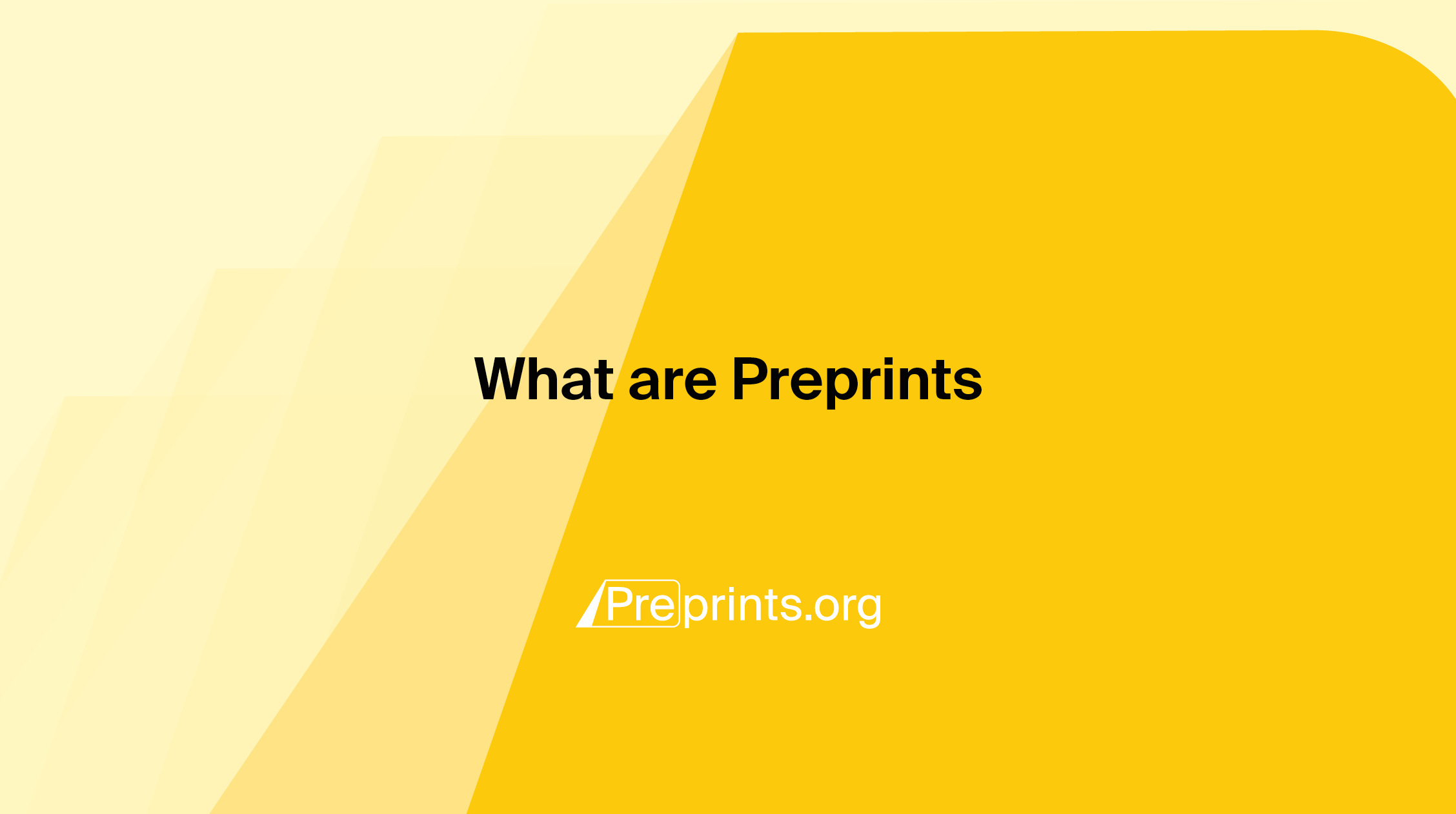
What Are Preprints?
Preprints are versions of research works that do not undergo the traditional peer review process and report on either ongoing research or research that is complete. Publishing preprints brings with it a number of benefits, including the rapid dissemination of research.
There are a host of other benefits to publishing preprints for academics and researchers. This article elaborates on these benefits, provides an overview of preprints in the current scholarly publishing landscape and provides more information on the MDPI initiative Preprints.org.
Indexing
Preprints have grown in popularity in recent years. Due to their increased use, the Preprints Citation Index was launched by Clarivate in 2023. The indexing of preprints by Clarivate on Web of Science (WoS) provides authors with the opportunity to display preprint publications on their profile, allowing them to receive and display community reviews for preprints and making preprints citeable.
Preprints are registered and have a unique digital object identifier (DOI) issued by Crossref. They are instantly citable and provide a permanent link for the article, even if the URL on the platform changes. If a new version of the preprint is created (due to updates or changes), it will receive a different DOI. This ensures that the most up-to-date version of a preprint is available for other authors to read, cite, and leave feedback on.
A brief history of preprints
In 1961, the National Institutes of Health launched the Information Exchange Groups, publishing the first iteration of what we now recognize as preprints. Today, there are many services and platforms available for authors that are interested in publishing their preprints. Major preprint publishers and repositories include arxiv.org, medrxiv.org, and preprints.org.
Benefits of preprints
Preprints have a number of benefits. Some of these are more centred on the academics who publish them, while others are applicable to the research community as a whole. To list just a few:
- They’re citeable;
- You can receive feedback on them;
- They are multidisciplinary.
Because of these benefits and the short period of time it takes to publish them, preprints provide authors with a fast option to publish preliminary research. To explore preprints pros and cons in greater depth, you can read a previous blog post.
Adapting to the increased use of Preprints
While there are many benefits to preprints, it’s important to acknowledge some of the limitations. It bears mentioning that some of these have been significant. For example, when health crises—the COVID-19 pandemic being most recent—arise, lack of clarity for the general public of what preprints are and how they should be interpreted can lead to misunderstandings.
Preprints do not undergo the lengthy peer review processes that can take months and, in some cases, even years. They are screened for basic ethical standards, such as plagiarism checks and ethical approval checks for studies involving humans or animals. Once these checks are complete, the preprint is posted directly online. This enables authors to share their research globally and receive credit and feedback for their work.
Preprints and Open Access publishing
Preprints are being recognised as a way to achieve Open Science and Open Access publishing by providing greater insight into the scientific process and speeding up the dissemination of research.
Updates to funding, for example, will change the way that preprints are published. The main update is the recent announcement made by the Bill and Melinda Gates Foundation’s new Open Access funding policy, which you can read more about here.
In short, as of 2025, the Foundation will no longer support the payment of article processing charges, which are common in Open Access journals, thus requiring its grantees to publish preprints of their work.
Preprints.org
As preprints become increasingly visible and their benefits more apparent, we will continue to see processes such as indexing and peer review adapt.
For more information about preprints, a useful FAQ, or if you’re looking to submit, you can refer to the Multidisciplinary Preprints Platform. Here, you’ll be able to find more details about everything from how to submit your preprint to details about the advisory board.
[Updated 04/06/2024]











Good morning,
Could you provide information about how the preprints work? In case the article want to be published in a peer-review journal, there are some restrictions? Thank you in advance for the information
Hi,
Preprints are versions of articles that are shared before the peer review process. Many journals allow them to be published before publication in a journal, but this ultimately depends on the specific journal’s requirements. Thus, you must contact the editorial office and confirm before submitting your article.
All the best.